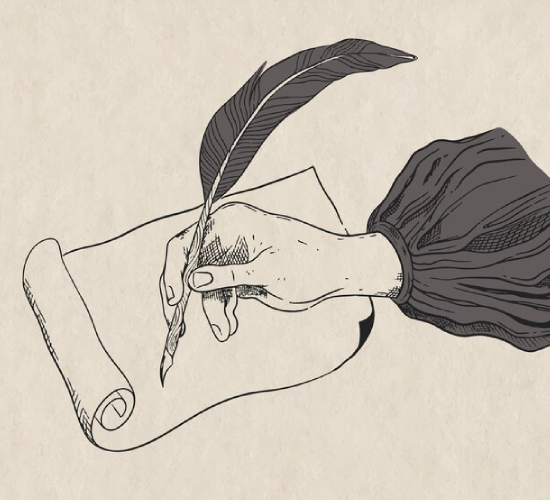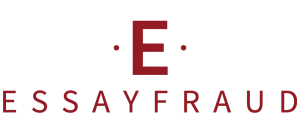How to Write an Essay Introduction
Writing an essay introduction is an important part of the writing process that grabs the reader’s attention and sets the tone for the entire essay. Begin with a general introduction to the topic, indicating its relevance or importance. Next, identify the main problem or issues you will be addressing. It is also important to state your thesis or main idea of the essay.
Use interesting facts, quotes, or anecdotes to grab the reader’s attention and emphasize the importance of your topic. Provide a smooth transition from the introduction to the main part to avoid breaks in the logic of the text.
Avoid general statements and phrases that can be used in any essay. Instead, try to create a unique and compelling introduction that reflects your perspective on the topic.
Remember that the introduction is a kind of “business card” of your essay, so try to make it interesting and convincing so that the reader wants to know more.

Preliminary Definitions
“Preliminary Definitions” refers to the initial set of explanations or clarifications provided before delving into a more detailed discussion or analysis. These definitions serve to establish a common understanding of key terms or concepts that will be central to the subsequent content.
In academic or technical contexts, preliminary definitions are often included at the beginning of a document, research paper, or project to ensure that readers have a clear grasp of the terminology used. This practice helps prevent misunderstandings and ensures that all stakeholders share a common foundation of knowledge.
These definitions may involve specifying the meanings of specialized terms, introducing acronyms, or clarifying the scope and context of the subject matter. By offering preliminary definitions, authors aim to create a framework that enhances the reader’s comprehension and facilitates a smoother flow of information throughout the text.

How long should it be introduced?
This will allow you to convey more detailed information on your topic and give readers an overview of what’s to come. This means that if you have a 1000 word essay, your introductory paragraph should be between 80 and 90 words. This introductory paragraph should present your main idea and provide an overview of the topic you will cover in the essay. Also, it’s important to use catchy sentences to keep the reader interested in what’s to come.
What makes a good introduction
Have a hook at the beginning of the paragraph that catches the reader’s attention.
It should provide background information on your topic.
It should give the reader an idea of the main points and claims that will be covered in your paper.
It should provide all the necessary information in terms of frames, characters, settings, etc.
At the end of your Introduction, there needs to be a clear thesis statement that reflects the main idea of your essay.
Need help WRITING RESUMES?
Just submit your requirements and choose a resume writer. That’s all we need to write a winning resume for you.
What are the 3 parts of the Introductory paragraph?
Hook: The hook is the first part of a presentation that helps hold the audience’s attention. These can be anecdotes, quotes, or facts that are relevant to the topic you are going to cover. Connection: Once you’ve captured your audience’s attention, you need to create a connection between the hook and the main topic of your presentation. This could be history, background, or reasons why this topic is important to talk about. Thesis statement: The thesis statement is the last part of your introduction. This is the main argument of your presentation and is the essence of what you will talk about during the session.
Hook essay. The hook can be a question, quote, interesting fact, or anecdote. This helps the reader to understand the theme and purpose of your essay. 1. Use catchy and meaningful words. Words like “awesome,” “awesome,” and “fantastic” can help grab your reader’s attention. 2. Use short and concise sentences. Sentences that are too long will bore readers, so be sure to use short, concise sentences to catch their attention. 3. Create hooks that are relevant to your topic. Be sure to create hooks that relate to the main topic of your writing so readers can see how your writing relates to their topic. 4. Use pictures or videos to help get your message across. Images or videos can help provide a visualization of what you’re saying, making it easier for readers to understand.
Connection: Your thesis statement is the main argument you will make in your essay. It should be clear and strong, and describe your opinion on the topic you are discussing. 1. What is the purpose of this research? 2. What will be achieved by doing this research? 3. How will the results of this research help the reader? 4. What methods are used to collect data and information? 5. What is the relevant historical or social context for this topic?
Thesis statement :This core statement should describe your goals for writing your introduction. After that, you can build an outline for the introduction that contains relevant and useful information. Be sure to include information about the main topic, background, and purpose of your piece. Also be sure to include some examples or data to support your core statement. Finally, don’t forget to close with a clear and effective conclusion. “An adequate work-life balance is essential to achieving optimal well-being and productivity. This balance can be achieved by setting time for various activities, such as work, leisure, gathering with family and friends, and taking time to exercise. In this way, people can avoid excessive stress and fatigue from overwork without rest.In addition, work-life balance can also help people to develop new skills and make them more productive at work. As such, it is important for everyone to find the right balance between work and personal life.”
INTRODUCTION TO PLACES FOR DIFFERENT TYPES OF ESSAYS
If you are writing an argumentative essay, your introductory paragraph may contain information about the topic to be covered and the argument to be made. Introductory paragraphs can also contain information about how the text will be structured or organized. The content included in the introductory paragraph should be relevant to the purpose of your essay. It should provide an overview of the topic and main purpose of your essay. Also, it should make people want to keep reading more to know more about what’s to come. The introductory paragraph should also convey the main ideas which will be discussed in more detail in later sections of the text. Narrative Essay: A narrative essay is a form of essay that tells a story or experience.
The introductory paragraph for a narrative essay should describe the situation and give an idea of how the story will develop. For example, an introductory paragraph for a narrative essay about traveling abroad might read: “When I arrived at the international airport, I was a little scared. I had never traveled that far before and I didn’t know what to expect.” Analytical Essay: Analytical essays ask students to analyze a particular topic in a deep way. The introductory paragraph for an analytical essay should highlight the problem being analyzed and provide a brief description of how the topic will be further explored. For example, an introductory paragraph for an analytical essay on the impact of globalization might read: “Globalization has had a major impact on the world economy, culture, and politics. In this essay, I will explore how globalization has affected every aspect of modern life.”

Persuasive Essay: Persuasive essays ask students to convince their audience that an opinion or argument is correct. An introductory paragraph for a persuasive essay should identify the main argument and provide a brief description of how this argument will be supported by concrete evidence. For example, an introductory paragraph to a persuasive essay about the benefits of meditation might read: “Meditation has been scientifically proven to benefit mental and physical health. In this essay, I will demonstrate that meditation is an effective way to improve quality of life by discussing some of its benefits. ” Personal Essay: The personal essay is a form of essay that asks students to tell a story about themselves or someone close to them. The introductory paragraph for a personal essay should give a brief description of who the subject is and what is their purpose in the story. For example, the introductory paragraph to a personal essay about your mother might read: “My mother was one of the strongest people I have ever met in my life. In this essay, I want to tell you about how she has shaped my life in her own way.”a
Tips For Writing Introductory Paragraph Introductions
From
- Keep in mind the purpose of your assignment and make sure your introduction aligns with it.
- Use an attractive and appropriate hook that grabs the reader’s attention from the first line.
- Explain by letting your readers understand your attitude well.
- Describe key terms related to your topic, if necessary.
- Show that you understand your subject.
- Provide your readers with a metaphorical roadmap that will help them understand what you will cover in the paper.
- Be concise – it is recommended that you keep your introductory paragraph to about 8-9 percent of the total number of words in your paper (eg, 160 words for a 2000 word essay).
- Create a clear and strong thesis statement.
- Stay engaged.
- Make sure that your introduction makes a logical and smooth transition into the body of your paper.
- Ask for help from Essayfraud Team.If you feel like using a professional essay help!
Instead
- Include too much background information.
- Go off topic or include unnecessary sentences.
- Make your introduction too long (unless you’re writing something like a 30 page paper).
- Give it all. Leave some hidden stuff so you can keep your readers engaged and then reveal later.
- Use cliches or generalizations.
- Too broad.
- Use too many quotes.
